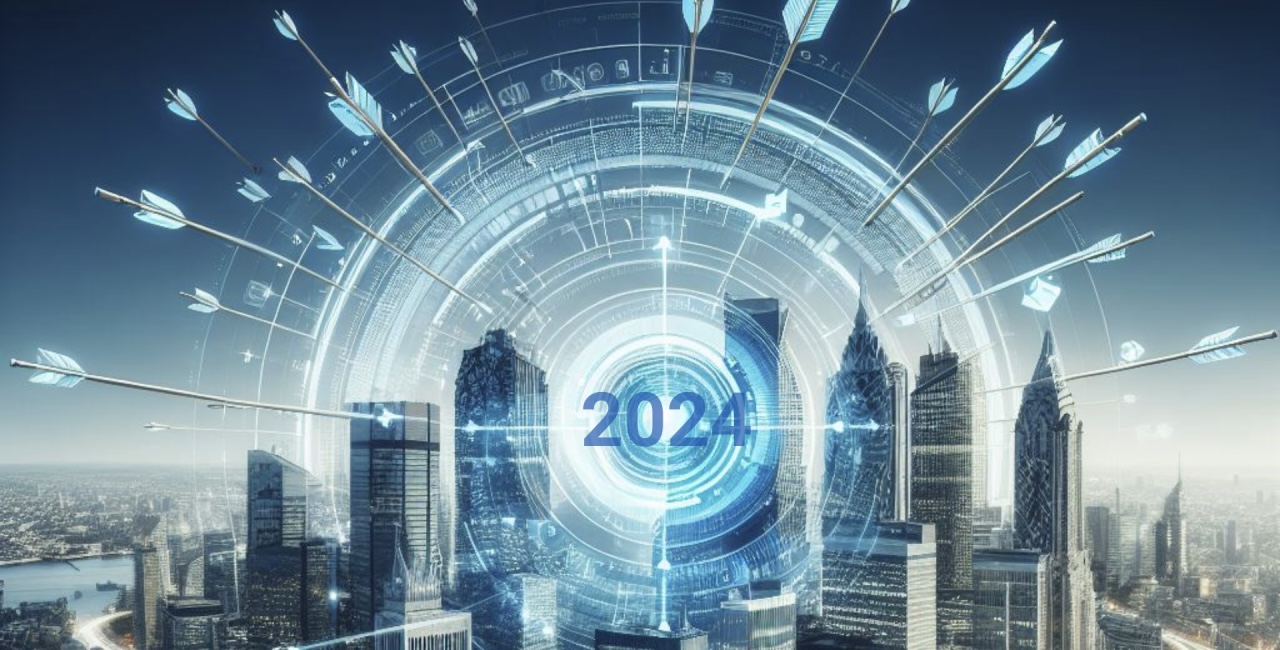End of The Year: Top 5 Threats from 2024
What Every Business Needs to Know
As technology continues to evolve, so do the tactics of attackers. The cybersecurity landscape faced unprecedented challenges in 2024, with threats targeting both emerging technologies and long-standing vulnerabilities. Staying informed is your first line of defense.
In this blog, we’ll break down the top five threats businesses need to continue to watch for in 2025 and how to prepare for them.
1. Ransomware as a Service (RaaS)
What It Is:
Ransomware continues to evolve, with cybercriminals now offering Ransomware as a Service (RaaS). This allows even non-technical attackers to deploy sophisticated ransomware attacks by purchasing ready-made tools from the dark web.
Why It’s a Threat:
- Broadening Accessibility: RaaS lowers the barrier to entry, increasing the number of attackers.
- Increased Targeting: SMBs, hospitals, and local governments are especially vulnerable.
- High Costs: Downtime and ransom payments can cripple organizations financially.
How to Defend Against It:
- Implement robust backup solutions to recover data without paying a ransom.
- Educate employees to avoid phishing scams, which are a common entry point.
- Deploy endpoint protection and intrusion detection systems.
2. Supply Chain Attacks
What It Is:
Attackers target a business’s supply chain to infiltrate systems indirectly. This often involves compromising software providers, hardware manufacturers, or third-party vendors.
Why It’s a Threat:
- Trusted Access: Attackers exploit the trust placed in suppliers to distribute malicious code or hardware.
- Widespread Impact: A single compromise can affect thousands of businesses, as seen with the SolarWinds attack.
How to Defend Against It:
- Vet vendors thoroughly and require them to adhere to strict security protocols.
- Limit third-party access to critical systems.
- Monitor supply chain partners for unusual activity or changes in behavior.
3. AI-Powered Phishing Attacks
What It Is:
AI tools like ChatGPT and other generative AI models are being weaponized to create highly convincing phishing emails, voice deepfakes, and even real-time chat impersonations.
Why It’s a Threat:
- Sophistication: AI makes phishing campaigns harder to detect by generating personalized and context-aware content.
- Speed and Scale: Attackers can target thousands of individuals simultaneously with minimal effort.
How to Defend Against It:
- Use email filtering tools with AI-based detection capabilities.
- Implement multi-factor authentication (MFA) to reduce the risk of account compromise.
- Train employees to spot advanced phishing techniques.
4. IoT Exploits and Infrastructure Attacks
What It Is:
With the increasing adoption of the Internet of Things (IoT), attackers are finding new vulnerabilities in connected devices. Insecure IoT devices can serve as entry points to larger networks.
Why It’s a Threat:
- Rapid Growth: Businesses are adopting IoT devices faster than they can secure them.
- Critical Systems: Industrial IoT (IIoT) devices controlling manufacturing and infrastructure are high-value targets.
How to Defend Against It:
- Regularly update IoT devices with security patches.
- Use network segmentation to isolate IoT devices from critical systems.
- Monitor IoT traffic for unusual behavior.
5. Insider Threats and Social Engineering
What It Is:
Insider threats occur when employees, contractors, or vendors intentionally or unintentionally compromise security. Social engineering remains a primary tactic to exploit human behavior.
Why It’s a Threat:
- Growing Risk: Hybrid work environments increase opportunities for accidental data leaks or intentional sabotage.
- Sophisticated Tactics: Attackers use social media and publicly available information to manipulate employees.
How to Defend Against It:
- Limit access to sensitive systems and data based on roles.
- Conduct regular social engineering simulations to test employee awareness.
- Establish clear protocols for reporting suspicious behavior or incidents.
Conclusion
The threats of 2024 are a stark reminder that cybersecurity is a moving target. Businesses must remain vigilant, adaptable, and proactive to protect their assets.
By understanding these top threats and implementing robust defense strategies, you can minimize risk and safeguard your organization. Remember, security isn’t just a technology issue—it’s a business priority.
At Omni Threat Solutions, we specialize in helping businesses stay ahead of emerging threats. Contact us today to learn how we can strengthen your defenses against the challenges of 2024 and beyond.
Author
Cody Doyle
Category
Cyber Threats
Read Time
4 min
